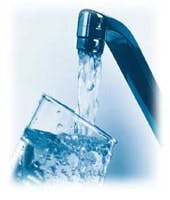The U.S. Environmental Protection Agency recently ordered the city of Vallejo, Calif. to reduce levels of disinfection byproducts from drinking water in the Vallejo Lakes water system.
This is the second action taken by the EPA against a small water system in California under the agency's disinfection byproduct regulation. The Vallejo Lakes system serves 2,800 people in Gordon Valley, Old Cordelia, Green Valley and parts of American Canyon in Solano County.
"We will continue to oversee Vallejo's efforts in providing drinking water which meets all national standards to all of its communities," said Alexis Strauss, the EPA's water division director for the Pacific Southwest region. "Chemical byproducts that result from drinking water treatment need to be monitored, reported and reduced to protect the consumer."
Although detected in trace amounts over the federal drinking water standard, the district is required to notify the public when detection goes above health-based standards. The drinking water standard for total trihalomethanes is 80 parts-per-billion; the Vallejo Lakes system had a range from 87 to 118 ppb. While the system exceeds the standard, no effects on human health are anticipated from this short-term exposure.
The byproduct chemical detected in the city's water system is total trihalomethanes, which after many years of consumption may cause some people to experience liver, kidney or central nervous system problems and may increase the risk of cancer. In this case, the byproduct chemical is detectable in very trace amounts. The EPA does not suggest that customers need alternative or bottled water.
The city was required to monitor its water system for this and other byproducts chemicals on a quarterly basis beginning January 2004. The city violated the standard from Jan. 1, 2004 to March 31, 2005. It was also cited for failing to notify the public when it first because aware of its trihalomethane violations in August 2004.
The order requires the city to submit a compliance plan within 21 days of receiving the order and to reduce disinfection byproducts to below federal standards no later than Sept. 30, 2006.
The EPA has worked closely with the California Department of Health Services, which administers most of the Safe Drinking Water program in the state. However, the state has not yet obtained primary enforcement responsibility for the new byproduct regulations.
The EPA passed new disinfection byproduct regulations in December 1998 to protect public health from potentially harmful byproduct chemicals formed when chlorine reacts with natural organic compounds during the drinking water treatment process. The rule began regulating surface water systems serving ten thousand or more customers in January 2002, and smaller surface systems as well as groundwater systems in 2004.
Source: EPA


